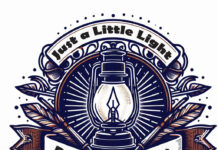In the year after the Lincoln County Hospital opened in 1952, I went there to have my tonsils out. The world is a big place for a six-year-old, and for a moment the hospital operating room was its core, massive and green with a monstrous bright lamp.
Dr. Smith and Dr. Songer leaned over me, masked faces menacing, voices soft and reassuring. One of them held an ether mask. They said something. Blackness.
I awakened with a throat on fire. Pearl Jensen, in starched nurse’s white cap to toe, sat at my bedside. She was smoking a cigarette, her bottle of cola on a table near the ashtray. I’d never seen her in uniform. Before this, she had been “Mrs. Jensen” who lived across the street with Mr. Jensen.
I told her my throat hurt. She held the little kidney-shaped pan under my face while I was sick. Mrs. Jensen said it was okay, ether does that to a lot of people. In a short while, she said, I could have all the vanilla ice cream I wanted, any time I wanted.
I did.
Most of us youngsters in Lincoln had been born elsewhere, before Lincoln had a hospital. A lot of us had tonsils out in the new hospital.
*
The hospital was a fount of news. In a small town, people like to know about each other. When it came to the hospital, news traveled mostly on a current of concern with only brief gusts of nosiness.
The building itself could tell us who might be there, and why. The large frosted windows of the operating room and the delivery room faced the street. At night if the windows on the right were lighted, Mrs. so-and-so was having her baby. Bright windows on the left meant the operating room was busy and that someone was in trouble. Dr. Smith or Dr. Songer or both would be there.
Back then, a lot of uncomplicated surgery ‒ appendix, tonsils, hernia, cysts and so forth ‒ happened in that building. The serious cases went to Salina or Wichita.
Harold Smith and Herb Songer had offices in a small brick building near downtown. In the morning they had rounds at the hospital and made house calls ‒ doctor at bedside, the cold bell of a stethoscope, the medicinal scent of his open bag, the syringes and needles in separate shiny metal boxes. Little white vials of penicillin, tiny envelopes for pills, instructions scribbled on the outside.
In the afternoon, the doctors saw patients at the office. If the hospital called with an emergency they left quickly. Accidents happened on the farm, at the ball field, in the back yard, in the kitchen, on the sidewalk, on the highway.
*
Doctors in small towns were fixtures. They knew almost everyone and most of their pets. They had children who were playmates and classmates. They were part of us, and we trusted them to heal us. It was an era of the town doctor as community principal – healer, father confessor, therapist, life coach, minister to the sick and hypochondriac alike, one who saw all, heard all, and spoke none of it.
Herb Songer and Harold Smith lived long enough to see the changes from country doctor to family practice, the end of house calls and the beginning of family medicine as something special, if a bit less personal and more hurried.
What hasn’t changed are the bugs that strike, the bones that break, wounds that need healing, disease that needs attention. When things get complicated, there is telemedicine. Or a sub-specialist up the road.
Rural hospitals are now at risk. We have local clinics, if not enough of them, and nurse practitioners and physician assistants have come to help. A university school of (rural) medicine opened in Salina in 2012, a branch of the gargantuan KU complex in Kansas City.
The elevation of family medicine is remarkable and not without pain. The science and its applications have advanced in great leaps but for many, help now means a long trip. The population has shifted dramatically to cities, leaving health care stretched over vast stretches sparsely settled, their people older, and poorer, and many with little or no insurance.
Kansas, per-capita, leads the nation in the number of rural hospitals at risk. The Center for Healthcare Quality & Payment Reform, a non-profit think-tank, has found that more than 80 of Kansas’ 104 rural hospitals are deep in debt ‒ and more than half of them are at risk of closing.
Topeka shrugs.
(Next: Any hope?)





What great memories you stir here, John! My tonsils were carved out at the age of four, and believe it or not, I still have the vision burned in my memory of that “wash rag” soaked in ether dropping on my face and everything going dark. This story is one of your best, because I knew and recall most of the people you named from the brief time my family lived in Lincoln.